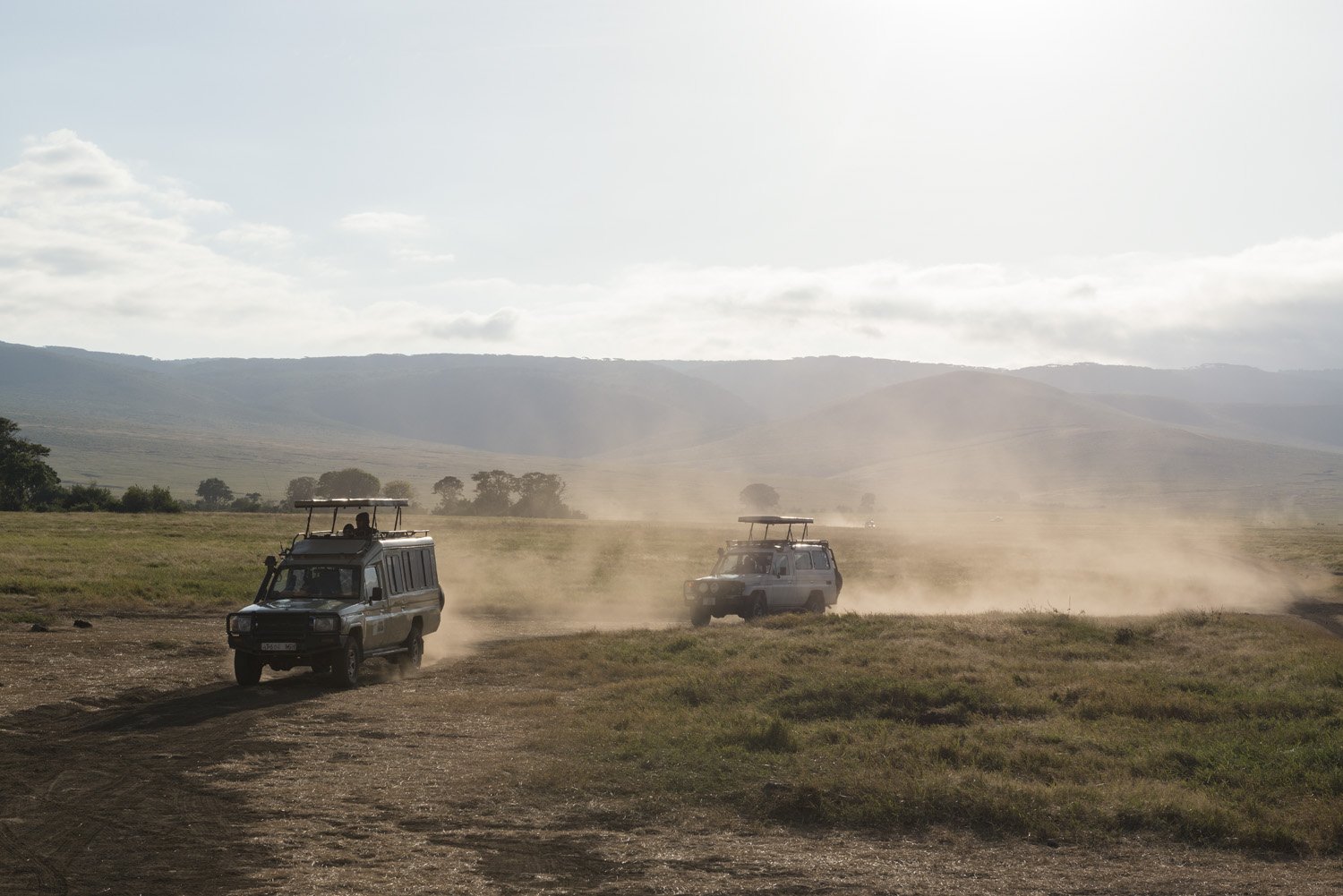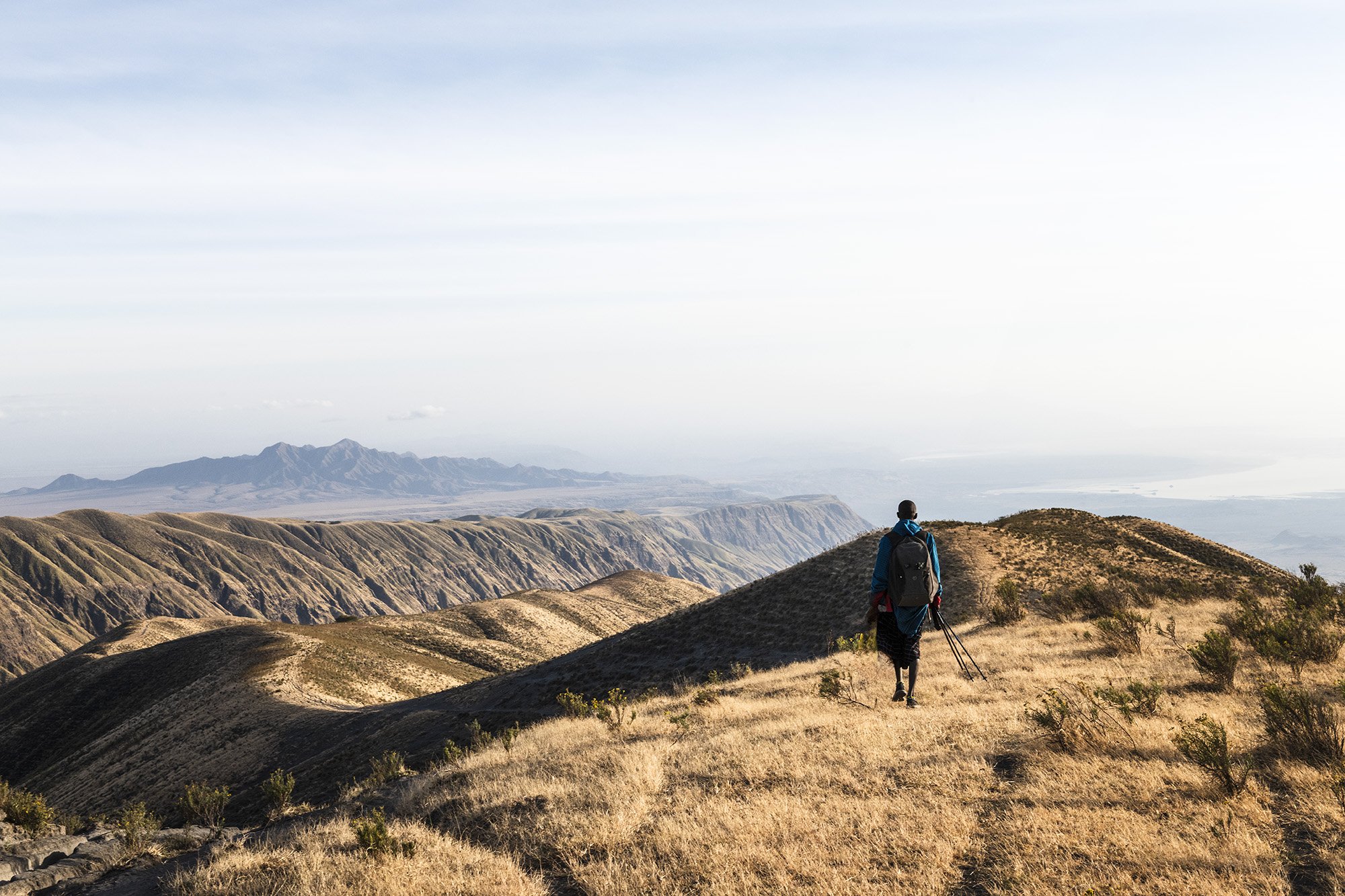
Tanzania is renown for its exotic wildlife, spectacular landscape and diverse African tribal groups.
Tanzania has 16 national parks, 29 game reserves, 40 controlled conservation areas and marine parks and is arguably the best safari destination on the African continent.
Tanzania has something for everyone.
-

Tarangire National Park
Tarangire National Park is the 6th largest in Tanzania covering an area of 2,600 square KM’s. It is home to one of the largest elephant populations in Africa with several herds of up to 300 members per herd. It is also renowned for its giant baobab trees.
There are large numbers of impalas, elands, buffaloes, giraffes, Bohor reedbuck, Coke’s hartebeest & Thompson’s gazelle.
Among the other common animals in the Tarangire are wildebeests, zebras, leopards, lions, hyenas, and cheetahs. There are over 545 bird species identified in the Tarangire National Park.
A balloon ride at dawn over the Tarangire National Park followed by a breakfast in the wilderness is nothing short of breathtaking.
-

Mto wa Mbu
Mto wa Mbu is a bustling farming community home to around 18,000 people. It is one of the most culturally diverse villages in Africa with over 120 different tribes. Its primary industry is agriculture, the village is a riot of colour and bustling activity. You can stroll through the streets, do a bike ride through the villages and banana plantations or a bijaji tour and grab an espresso at Café Kabisa coffee cart.
-

Lake Manyara National Park
Wildlife in Lake Manyara National Park is good all year round, but at its best from late June to October, during the Dry season.
Lake Manyara is a sanctuary for hippo, giraffe, impala and zebra, and its lake a magnet for birdlife with over 400 species of bird, including sizeable flocks of pink flamingos. November-April, is the best time to see migratory birds, including thousands of pink flamingos and pelicans.
-

Ngorongoro Crater
The Ngorongoro crater is a World Heritage site, part of the Ngorongoro Conservation Area and part of an International Biosphere Reserve, as declared by UNESCO.
It is home to over 20,000 large animals including lion, elephant, leopard, zebra, wildebeest, buffalo and hippopotamus. Some of the last remaining black rhinos in Tanzania can be found in the crater. The landscape is nothing short of a spiritual experience.
-

Serengeti National Park
The Serengeti is the largest National Park in Tanzania and one of the greatest wilderness areas in the world. It spans 30,000 sq. km’s and is home to the highest concentration of large mammals in the world. It is divided into 3 regions
Serengeti central
Serengeti North (Lobo and Mara)
North East (Bolongonya)
The Serengeti supports a magnificent diversity and abundance of animals, from the ‘Big Five’ – lion, leopard, elephant, buffalo and black rhino (although these are rarely spotted) to giraffe, Grant's gazelle, impala and eland.
-

Olduvai Gorge
Olduvai Gorge is a paleoanthropological site in the eastern Serengeti Plain. The gorge is referred to as the “Cradle of Mankind”, believed to be the site of found remains of the first human beings to walk on Earth. The steep ravine is approximately 48.2 km long and 90 meters deep.
Located between the Ngorongoro Crater and the Serengeti National Park, the gorge provides a great safari add-on for those interested in early civilisation.
The views from the amphitheatre are spectacular and you can also drive down into the gorge itself and visit the sites where Mary and Louis Leakey discovered early hominin remains. It is a 10-15mon drive and there is an information board at the site.
-

Empakaai Crater
Break up your safari and stretch your legs.
Tucked away in a remote area of the Ngorongoro Highlands is Empakaai Crater.
40km north east of the Ngorongoro Crater, it is the second-largest crater in the Ngorongoro Conservation Area. Empakaai is almost 8km in diameter with a saline crater lake that is frequented by thousands of flamingos.
The 45min - 1 hour descent offers an incredible experience on the crater floor.
-

Balloon Rides
A balloon ride is the perfect compliment to any safari giving you a rare chance to experience the awakening of the surrounding wildlife from a unique perspective.
Balloon rides can be arranged in the Tarangire National Park, Ngorongoro Conservation Area & the Serengeti National Park.
-

Lake Eyasi
Lake Eyasi is a great safari add-on for anyone visiting the Ngorongoro Crater or Serengeti. Located approximately 75 KM’s south-west of the Ngorongoro Conservation Area and 100 KM’s south of the Serengeti National Park, it is where you can meet the Hadzabe and Datoga tribes. This area is known as the Serengeti Plateau.
For over 50,000 years, the Hadza or Hadzabe have lived around the lake’s shores. The Hadzabe are hunter-gatherers who live only in the Lake Eyasi region of Tanzania. It is estimated that there are less than 1200 remaining in the world. They are living a hunter-gatherer existence that is little changed from thousands of years ago.
The Datoga are superb silversmiths, making hunting tools for the Hadzabe in exchange for skins and food.
-

Lake Natron
Lake Natron is 56 km long and 24 km wide and contains salt, soda, and magnesite deposits. The lake’s warm water is an ideal breeding ground for the Rift Valley flamingos. During breeding season, more than 2 million lesser flamingos use the shallow lake as their primary breeding ground.
July to early October is one of the the best times to visit with winter offering slightly cooler weather, and no rain. Remote and spectacular, Lake Natron is a perfect haven to rest and unwind.
You can take a guided walk to the lake’s edge to see the flamingos, enjoy the stunning Ngare Sero waterfall hike, or for the more adventurous climb Ol Doinya Lengaii, an active volcano.
-

Zanzibar
Zanzibar offers the wonders of Stone Town complimented with pristine beaches. It's well known for its stunning beaches, turquoise oceans, and lush rainforests.
Stone Town is a city of historical wonders, colourful markets, and labyrinth of shops.
Stone Town (Swahili for 'Old Town') has an eclectic mix of narrow alleys lined by houses, shops, bazaars and mosques. You can easily meander for hours in the historic quarter where each twist and turn reveals something new.
-

Great Rift Valley Hike
A 3 day hike through the Great Rift Valley is the perfect compliment to any safari.
The hike begins at Empakaai campsite in the Ngorongoro Highlands, providing easy access to the crater floor and stunning views of the large alkaline soda lake below.
As you trek the Great Rift Valley you are treated to spectacular views and rolling hills. This less traversed trail is a unique way to witness the changing lives of the Maasai. You will camp the night amongst beautiful acacia trees.On day 3, views of Ol Doinya Lengai begin to emerge and dominate as you traverse the rift wall, teasing you with the possibility of conquering this majestic, active volcano.
Once you reach the rift valley floor you will be collected by our drivers and transferred to Lake Natron. You have the option of climbing the ‘Mountain of God’ when you arrive at Lake Natron.
